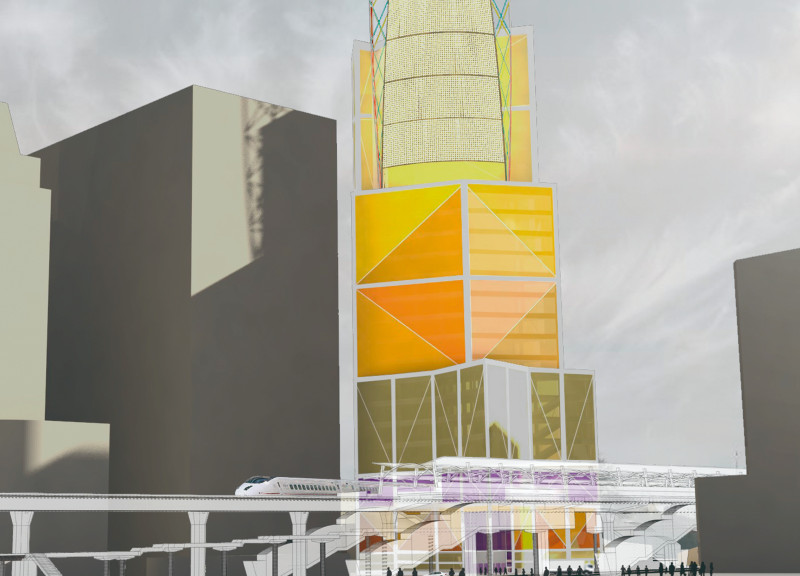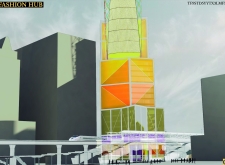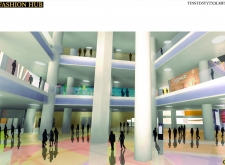5 key facts about this project
At its core, the Fashion Hub symbolizes a new era in the fashion industry by integrating technology and creativity within its physical structure. The architectural design is intentionally crafted to encourage interactions between various stakeholders in fashion, from designers and brands to consumers and local communities. By fostering an open and collaborative environment, the project seeks to enhance Bangkok’s profile as a significant hub for fashion and design.
The architecture of the Fashion Hub features a unique and playful facade, characterized by complex geometric shapes that suggest movement and dynamism. This design approach not only adds visual interest but also serves to differentiate the building within the bustling urban landscape of Bangkok. The use of overlapping planes and varying elevations creates depth and dimension, which invites exploration of the space both from the outside and within.
Operationally, the layout of the Fashion Hub is arranged to serve multiple functions. It includes exhibition spaces, retail areas, office settings, and recreational zones, all designed to accommodate the diverse needs of professionals and the public. These distinct areas are interconnected, promoting fluidity and encouraging visitors to navigate effortlessly throughout the building. The thoughtful arrangement of spaces enhances user experience, making it both functional and engaging.
Another critical aspect of the project is its emphasis on natural light and openness. The extensive use of glass in the facade allows for ample daylight to penetrate deep into interior spaces, fostering an inviting atmosphere. This connection to the exterior not only enhances the ambiance but also helps to reduce reliance on artificial lighting, reinforcing the project's sustainability goals.
In terms of materiality, the Fashion Hub incorporates a well-considered palette that underscores the project’s architectural intent. High-performance glazing is utilized to maximize views and improve energy efficiency. Steel plays a significant role in the construction, offering a lightweight yet strong framework that supports the building’s striking architecture. Reinforced concrete elements provide the necessary stability to maintain the structural integrity of the unique forms.
A particularly notable feature of the building is its sustainable design considerations. The project integrates energy-efficient systems, rainwater harvesting mechanisms, and green roofs, all contributing to a reduced environmental footprint. These eco-friendly strategies make the Fashion Hub not only an architectural statement but also a responsible member of the urban community.
The Fashion Hub demonstrates a commitment to community engagement through its design. The public areas are designed to encourage interaction, making it a gathering place for individuals interested in fashion, local residents, and tourists alike. The architecture serves as an inclusive space that welcomes various demographics, reflecting the diverse and vibrant culture of Bangkok.
In summary, the Fashion Hub stands as a symbol of contemporary architectural practice, merging utility with creative expression. Its innovative design, thoughtful site planning, and dedication to sustainability position it as a pivotal space in the fashion landscape of Bangkok. Readers interested in a deeper understanding of the architectural aspects of this project are encouraged to explore architectural plans, designs, and sections to appreciate the nuances of the Fashion Hub’s design and functionality.


























